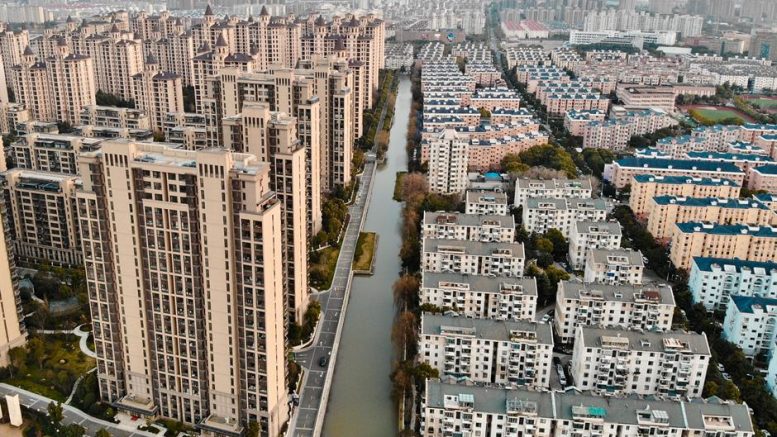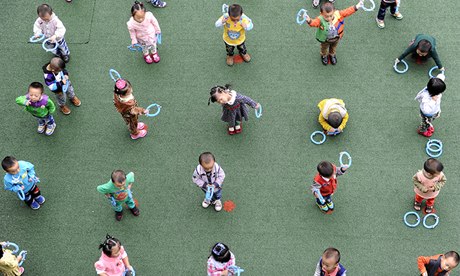I grew up in Shanghai, China, and for the first years of my life, housing wasn’t a big issue. The city was rapidly expanding, and houses were easy to come by with plenty of people to fill them.
When I left for America, the Chinese housing market burned like an oven. Houses became harder to find and more valuable as cities expanded. Urbanization has been the primary trend in China for the past decades. And perhaps its demise as well. In China’s famous and landmark sci-fi movies, The Wandering Earth I & II, the housing prices in Beijing and other major cities were ridiculed. When will prices ever go down?
The answer is, well, now. The real estate sector in China is facing a bubble and crisis comparable to the 2008 American Housing Crisis. In fact, the “Chinese Lehman Brothers” have already collapsed, becoming the Evergrande Group. Their CEO (Hui Ka Yan) was arrested, and further details are only speculated. Being an economic tycoon in China is dangerous, especially if your too-big-to-fail company disappoints the government. The place where I grew up, Shanghai, has seen a massive influx of houses on the market. Since the start of the year, the number of landowners looking to sell has increased by around 80%. Across all of China’s major cities, the number has skyrocketed to an average of 20–30%, a stark contrast to the lack of prospective buyers.
Behind this housing bubble are three key issues: urbanization, COVID-19, and governmental policies. Now that the foundations of the Chinese economy are failing, it remains unclear how the government will address this.
Urbanization is a double-edged sword. Take a look at places like Tokyo and Seoul, where every single job, development, or industry is settled, drawing a wide majority of residents of that country to the city. And China has similar issues. Shanghai, for example, is the financial center of the entire country. With two of the best universities and hundreds of top companies, rural students dream of using the “gaokao” exam to enter this dream of a metropolis. Shanghai symbolizes jobs and dreams, so as it grew, more people flocked to the city seeking a different life. This growth is sustainable for a while, as the housing development is matched by the number of people willing to purchase.
However, urbanization quickly became an overheating CPU. Rural migrants always came faster than houses could be built, so gradually but surely, the housing prices in major cities increased. As they increased, the real estate market became a financial game—and a failsafe investment. To sustain economic growth, the Chinese government encourages urbanization because places like Shanghai will attract foreign investment and lead to faster economic growth. Groups like the Evergrande took off like rockets. Backed by economic trends and a centralized government, the housing market could do no wrong. Continuous investments led to an overpriced housing market.
Moreover, an influx of people to cities draws opportunities away from rural areas, which causes severe imbalances in the economy. This issue is less severe in America because of “suburban areas,” where opportunities are spread relatively evenly. People didn’t need to flock to cities to live a fulfilling life. In China, however, and in large metropolises like Shanghai, I’ll tell you there is no such thing as a suburb. You’re either part of the city or get up at 4 a.m. and take the earliest transit to the city’s heart. The economic imbalance built up, and COVID-19 was the last straw.
China was hailed as a success story during the midst of COVID-19. In the first waves, when America grappled with masks, the idea of a non-traditional vaccine, and the possibility of a quarantine, China set up extensive measures to ensure contact tracing and health monitoring. However, as China began reopening its shops, it found no answers to mutations like Omicron. While the rest of the world developed herd immunity (either through failed earlier policies or the adoption of advanced vaccines), China urged the unsuccessful development of Chinese vaccines and remained extremely vulnerable to new strands of viruses. At one point, quarantine measures were at their strictest because of the severity of the issues. The economy ended, with people living off one cabbage each day. As a result, President Xi made the impulsive decision to end all quarantine measures, leading to a striking (but unknown) death toll and a chaotic economy.
When people have no faith in the economy, they stop seeing real estate as an investment. Renting becomes more flexible and beneficial when there’s no prediction of China’s future. People begin selling houses because they don’t believe in China’s governance and economic strategies. President Xi’s belief in rapid economic growth and a centralized yet chaotic government is at the heart of the issue. To his credit, Xi has acknowledged many of these economic issues (like rural-urban divides, income inequality, and overheating markets), but in a borderline authoritarian government, effective implementation of policies becomes restricted as nobody is willing to speak the truth or provide opposing ideas.
So, the biggest issue and the best possible solution both come from the government. As of now, the debate still rages amongst Chinese investors and people, both mainland and abroad, on how to save the market (or if we even should, because letting prices revert back to their reasonable range is also a possibility). For millions of Chinese residents, however, they are trapped in a chaotic economy in the foreseeable future.






Be the first to comment on "The Crashing Real Estate of China"